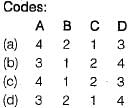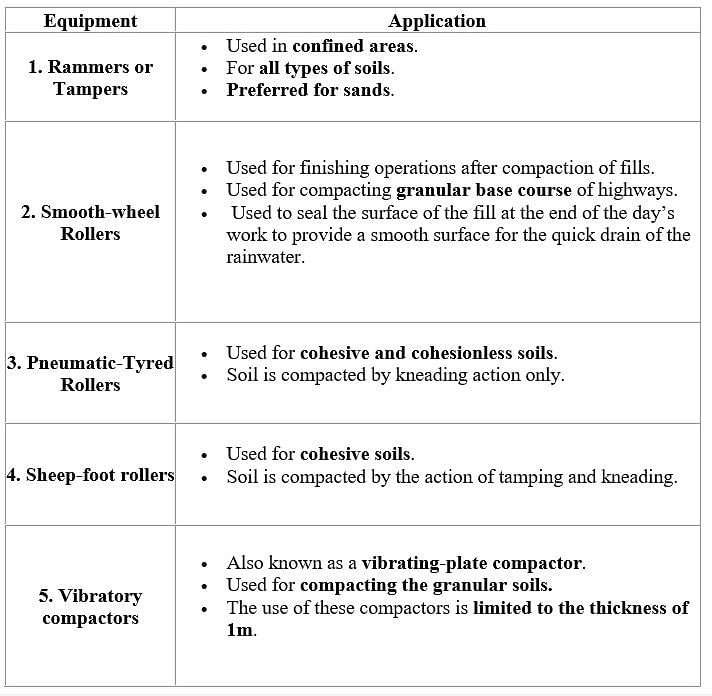Test: Soil Compaction - Civil Engineering (CE) MCQ
10 Questions MCQ Test GATE Civil Engineering (CE) 2025 Mock Test Series - Test: Soil Compaction
Match List-I (Equipment) with List-ll (Purpose) and select the correct answer using the codes given below the lists:
List-l
A. Sheep foot roller
B. Frog hammer
C. Vibratory roller
List-ll
1. To density cohesionless soils to relatively larger depths
2. To compact lumpy cohesive soil fills
3. To compact soils at corners and places which bigger rollers cannot access
4. To compact cohesionless soils of shallow depth

List-l
A. Sheep foot roller
B. Frog hammer
C. Vibratory roller
List-ll
1. To density cohesionless soils to relatively larger depths
2. To compact lumpy cohesive soil fills
3. To compact soils at corners and places which bigger rollers cannot access
4. To compact cohesionless soils of shallow depth

When the compactive effort is increased in a standard compaction test, the Optimum Moisture Content (OMC)
Match List-I (Roller type) with List-ll (Soil type) and select the correct answer using the codes given below the lists:
List-I
A. Pneumatic roller
B. Smooth wheeled roller
C. Sheep foot roller
D. Vibratory roller
List-II
1. Cohesive and granular soils
2. Plastic soils of moderate cohesion
3. Cohesionless soils
4. Silty soils of low plasticity

Given below are methods of compaction:
1. Vibration technique
2. Flooding the soil
3. Sheep foot roller
4. Tandem roller
5. Heavy weights dropped from a height
The methods suitable for cohesionless soils include
An increase in compactive effort will lead to which of the following?
Soil is compacted at which one of the following when a higher compactive effort produces highest increase in dry density?
|
31 docs|280 tests
|




















